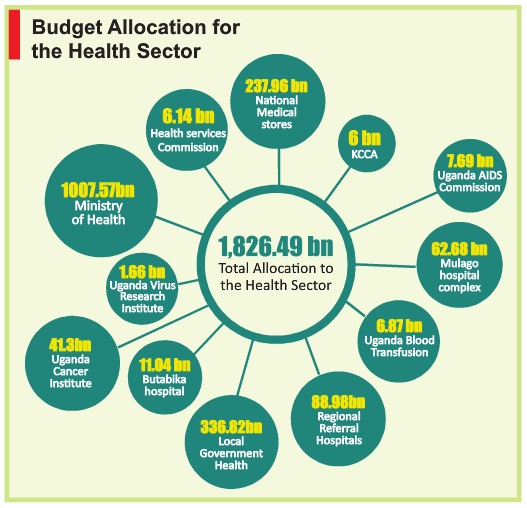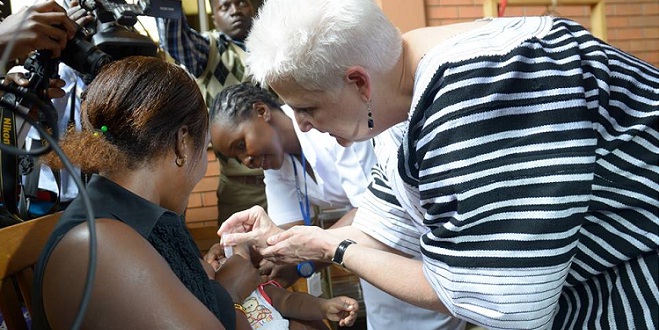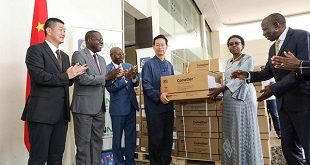Ailing health sector: Sector gets increment but worries over heavy dependence on donors persist
Every time the budget is presented, citizens take a hard look at the allocation to the health sector. This year, the government has unveiled an ambitious budget of Shs26trillion of which Shs1,826.49bn is going to the health sector an increase of 44% from last financial year’s Shs 1,270.81bn. Health sector analysts are not celebrating though.

Dr. Elioda Tumwesigye, the outgoing minister of health, told The Independent that the government’s plan is to accelerate investment in maternal, newborn and child health through strengthening health services at both district and lower levels.
A countrywide mass measles campaign will be rolled out and the Indoor Residual Spraying programme will resume in 30 districts that have been severely hit by Malaria. Also 26 Health Center IVs will be renovated across the country. He added that the sector needs Shs 36bn to cater for the wages of 3,542 health workers at general hospitals to meet the 72% target by end of FY 2016/17. This, he says, will enable general hospitals to deliver better services.
Traditionally, the government has largely banked on the generosity of development partners to bankroll the sector. Indeed, the government hopes that donors will inject Shs907.74bn even though the President has come out several times to say that they are trying to reduce dependence on foreign aid.
Dr. Joshua Wamboga, the director of Uganda Network for HIV/ Aids Service Organisations, says the 50-50 share of the budget between the government and donors is risky.
“It creates risks to the sustainability of the sector financing,” he says Patrick Ojulong, a budget advocacy officer at Action Group for Health Human Rights and HIV/Aid (AGHAU), is of the same view. He says with the biggest chunk of the budget being financed by donors, there’s nothing to celebrate yet.
“Donors have specific funding interests which may not necessarily be the sector’s priority,” he says, adding that most of the public funding is being allocated to higher level facilities yet most of the health problems are faced at the grassroots level. Yet, the money allocated to local government is too little because when divided, some facilities may get less than Shs 200,000 like it was the case last financial year.

The reliance on donors for the country’s health needs has not just started. In FY 2014/2015, donor aid accounted for over 25% of the health budget whereas last year alone, Global Fund, Uganda’s biggest health donors gave the country funding to the tune of Shs 1.4 trillion, which they injected into HIV, tuberculosis and Malaria control, care and treatment.
With such a history and the fact that donors’ financial assistance does have its own conditionality, Ojulong says the budget becomes less predictable as donors can pull out at any time leaving the population helpless.
The danger is that even though in the Health Sector Strategic Investment Plan, the government committed to spend $28 (about Shs 90,000) per citizen each year, the National HealthAccounts Survey shows the government spends only about Shs 30,000 per citizen with the bulk of the financing coming from personal income and donors.
Also, by the government allocating only 6.9% of the budget to the sector, its failing on its commitment to allocate 15% of its budget to the health sector in line with the 200l Abuja Declaration.
With the available money in the budget, the health sector’s key investment areas in FY 2016/2017 include among others the construction of 20 staff houses in Karamoja, rehabilitation of lower Mulago Hospital and construction of a regional pediatric surgery hospital. To some, these are not the health sector’s most critical needs. For Instance, Wamboga says despite the growing HIV/ Aids prevalence, the sector in FY 2016/17 has grossly underprioritised financing for HIV/ Aids alleviation currently at Shs100bn for the last three years.
Going by the new World Health Organisation guidelines to test and treat, the current enrollment of 80%will reduce to 48% if the budget for ARVs remains constant. He says the government should provide an additional Shs151bn to cater for the funding gap on ARVs based on the treatment guidelines.
Even though the NMS budget has been increased by Shs10bn, Wamboga says we are likely to see drug stock outs again like it happened last year because apparently the government only increased this money to cushion against the shilling- dollar depreciation when procuring drugs.
“With persistently-low funding to essential areas like hygiene and sanitation, there is no way we are going to have a fully-functioning health system,” says Ojulong.
 The Independent Uganda: You get the Truth we Pay the Price
The Independent Uganda: You get the Truth we Pay the Price



